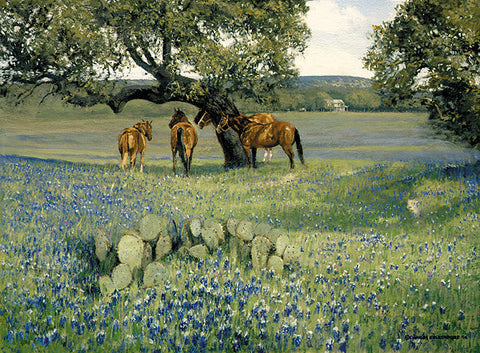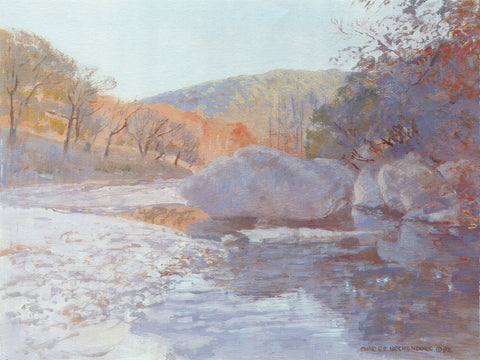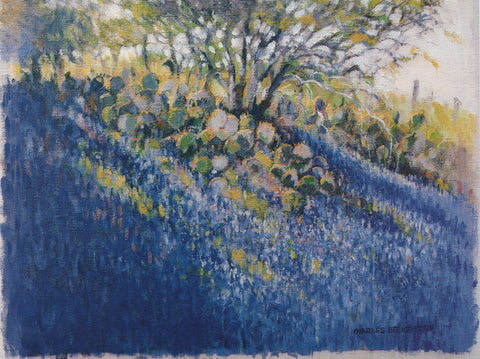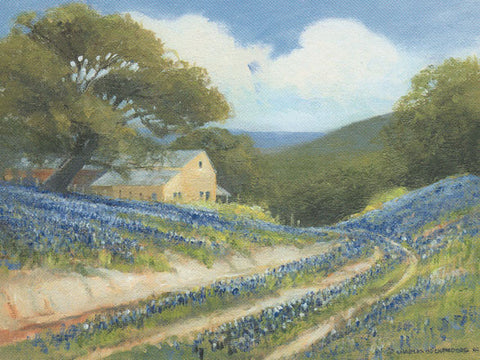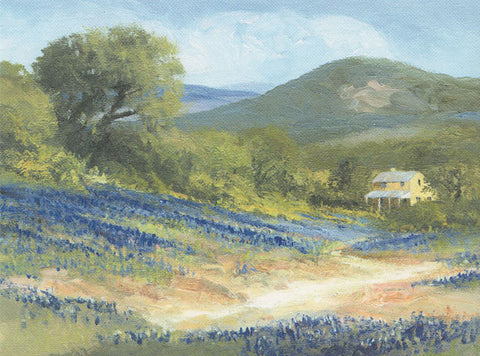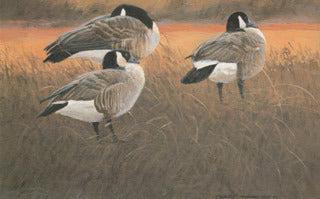
H-59 Canadas
Color Reproduction | By Charles Beckendorf
Additional Information
The Canada goose is the most widely distributed and the most recognizable goose in North America. Most people can readily identify the Canada goose, but to identify which of the eleven races a Canada belongs to is more difficult. Most biologists just say, "large," "medium," and "small."
Five races of small Canadas migrate throughout Texas, and one race of large Canadas comes to the northeast corner of the state.
Canada geese, like most other wild geese, spend the night - and sometimes the mid-day hours - in groups on open water (either fresh or saltwater), and fly out to surrounding fields to feed.
Few sights in nature are more memorable than the V-formation of Canada gesse. The wild musical honks, once heard, are never forgotten.
It is characteristic of the Canada goose to stay in family groups from the time the eggs hatch until the next breeding season. These groups join others to form flocks during migration and winter. Once mated, usually at two to three years, the pair will remain together until one dies.
This image is from the Charles Beckendorf Texas Wildlife book. The original was an acrylic painting on canvas (1992) and the size is approximately 14 X 11 inches. The total edition size of this print is 500.
This is a part of the Texas Wildlife Art Prints Collection.
Color Reproduction
The Canada goose is the most widely distributed and the most recognizable goose in North America. Most people can readily identify the Canada goose, but to identify which of the eleven races a Canada belongs to is more difficult. Most biologists just say, "large," "medium," and "small."
Five races of small Canadas migrate throughout Texas, and one race of large Canadas comes to the northeast corner of the state.
Canada geese, like most other wild geese, spend the night - and sometimes the mid-day hours - in groups on open water (either fresh or saltwater), and fly out to surrounding fields to feed.
Few sights in nature are more memorable than the V-formation of Canada gesse. The wild musical honks, once heard, are never forgotten.
It is characteristic of the Canada goose to stay in family groups from the time the eggs hatch until the next breeding season. These groups join others to form flocks during migration and winter. Once mated, usually at two to three years, the pair will remain together until one dies.
This image is from the Charles Beckendorf Texas Wildlife book. The original was an acrylic painting on canvas (1992) and the size is approximately 14 X 11 inches. The total edition size of this print is 500.
This is a part of the Texas Wildlife Art Prints Collection.
Beckendorf color reproductions are developed using four color process printing on fine white paper. This advanced technique utilizes separate color plates for each of the primary colors, plus black. High-resolution digital scans and special process inks are utilized to yield beautiful, accurate reproductions.
About the Artist - Charles Beckendorf
Charles grew up in Mathis, Texas, where he had the opportunity to spend hours on large ranches. Generous land owners gave him permission to wander freely over their ranches and he observed creatures in their natural surroundings. He developed a lifelong love of nature, whether it be in the tiniest of flowers or the largest of animals. It was at this time that he became a true naturalist.
We Also Recommend
REVIEWS

